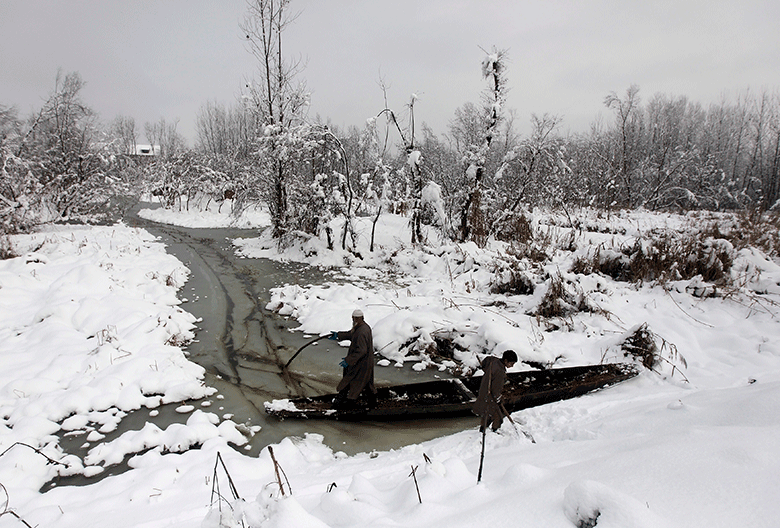Moody’s outlook for India is cold and harsh, but ECR’s risk experts believe the country can forge its own path through any short-term difficulties
It’s November, and Moody’s latest outlook on the global economy is chillier. It also has India is in its sights.
The credit rating agency has boldly lowered the outlook on its Baa2 sovereign rating from stable to negative, causing quite a stir, despite the fact Fitch and Standard & Poor’s are already a notch lower.
That doesn’t mean the sovereign borrower is about to become sub-investment grade like Brazil. There is still a comfortable cushion to avoid that fate, and the other agencies have stable investment grades, but it nevertheless marks a change of tone after the agency upgraded (from Baa3) two years ago.
The Times of India sees the move as a wake-up call, noting the lower trajectory for economic growth and higher debt burden as a prompt for structural reforms.
Reforms would be useful, of course, but not all experts agree that Moody’s decision is justified, or that it makes much difference, given the lower but stable grades the other two main agencies have maintained for years.
|
Mark Mobius, |
Take Mark Mobius, the founding partner of Mobius Capital Partners, a long-time ‘bull’ on India’s prospects, who dismisses the ratings action and sees reforms eventually kicking in. He, like other experts, remains optimistic about India’s long-term growth and sees the country’s difficulties as a short-term blip.
“Moody’s call was erroneous,” he told CNBC on Wednesday. “I don’t think it was called for, because I see tremendous growth coming in India going forward.”
GDP growth has slowed to 5% year on year in real terms, and is not fast enough to spur development or, crucially, enough jobs for India’s huge, young and expanding population.
However, the slowdown is viewed as cyclical rather than structural, and while India is seen growing by no more than China this year, IMF forecasts show it moving ahead of China in 2020, and remaining so over the longer term assisted by proactive policies.
Growth for 2024 will be 7.3% in India, but only 5.5% in China, the IMF states. Forecasting anything so far away is fraught with difficulty, but the point is the two countries are still seen to be on divergent paths.
ECR’s risk analysts would appear to agree.
Amid the economic slowdown, India has held up in Euromoney’s quarterly risk survey, at 55th out of 174 countries, six places higher in the rankings compared with five years ago.
During that time, Mexico (rated A3 by Moody’s) and Saudi Arabia (A1) have both declined and are now almost indistinguishable from India, as far as the various political, economic and structural risk factors are concerned.
Moreover, India has kept above Brazil, now 59th in Euromoney’s survey, and still struggling:
Experts, therefore, seem able to distinguish between genuine risk and white noise.
Rising tensions with Pakistan after India’s decision to revoke Jammu and Kashmir’s special status and formally divide the state into two new federally administered territories have been placed firmly in the latter camp.
For sure, many cite India’s economic slowdown as a problem, with some referring to the fact India has lost its status as the fastest-growing giant among the Brics, for now at least.
Exports are down, the rupee has suffered, and the latest IHS Markit purchasing managers’ index reflects this, having fallen to its lowest in more than a decade, even though it is still above 50 (in positive territory).
Budget pressures are surfacing, too, with increased public spending necessary, and revenue lagging.
However, this is to ignore the positives.
For one thing, China and the US seem to be on a path towards improving trade relations, invariably providing the global economy with a lift.
For another, India’s government has introduced a favourable tax regime.
“The latest corporate tax cuts, announced on September 20, are a large fiscal stimulus equal to 0.7% of GDP,” says the Asian Development Bank in its latest Asian Development Outlook 2019 Update.
“The average effective corporate tax rate including all surcharges will fall from 30% to 25% and, for new manufacturing companies, to 17%. This will place India among the emerging economies with the lowest corporate tax rates, promising to boost investment and growth, and make India more competitive internationally.”
Measures have also been announced supporting the agricultural sector to compensate farmers for irregular monsoons. Banks have been recapitalized and are subject to new governance reforms.
Meanwhile, inflation is likely to remain low at around 3.4% in 2019 and 4.1% in 2020, below its historical average, the IMF predicts. The current-account deficit is also well within risk limits, at 2% and 2.3% of GDP in each year.
On comparative risk metrics, India is rated more highly than Mexico and Saudi Arabia on most measures – with the exception of capital access. This includes corruption, transparency and policymaking, and on all of the structural metrics: demographics, soft and hard infrastructure, and labour relations.
Analysts are still confident in India, notably in terms of longer-term investments. For Moody’s, it seems more about moving in line with its competitors.


 Signal2forex.com - Best Forex robots and signals
Signal2forex.com - Best Forex robots and signals




